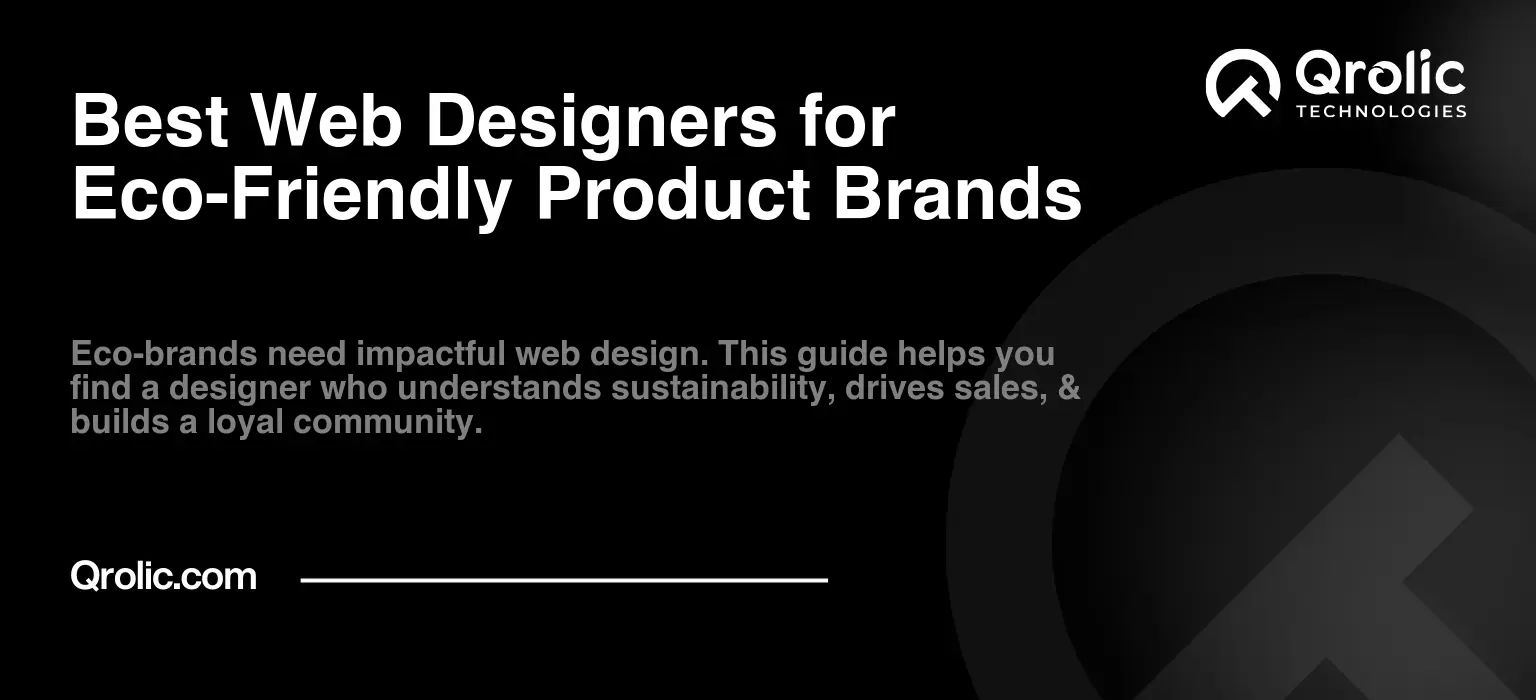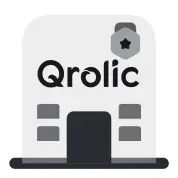The booming market for eco-friendly products reflects a global shift towards sustainability. But simply having a great, green product isn’t enough. You need a powerful online presence that resonates with your environmentally conscious target audience. This is where the magic of great web design comes in. Choosing the right web designer is crucial to not just sell products, but to build a brand that stands for something more. This article delves into the world of web design for eco-friendly product brands, guiding you to find the perfect partner to amplify your green message.
Quick Summary:
- Your website needs to clearly reflect your green values.
- Choose a web designer experienced with eco-friendly brands.
- Optimize your site for sustainable practices and SEO.
- Actively promote your brand through content and marketing.
Table of Contents
- Why Web Design Matters for Eco-Friendly Product Brands
- Communicate Your Brand Values
- Create a Compelling User Experience
- Drive Sales and Build Brand Loyalty
- What to Look for in a Web Designer for Eco-Friendly Brands
- Experience with Eco-Conscious Brands
- Design Philosophy and Aesthetics
- Technical Expertise and Functionality
- Communication and Collaboration
- Pricing and Transparency
- Client Testimonials and Reviews
- The Importance of Sustainable Website Design
- Reducing Website Carbon Footprint
- Content Optimization for Sustainability
- Strategies for Collaborating with Your Web Designer
- Setting Clear Expectations
- Maintaining Open Communication
- Staying Involved in the Process
- Examples of Successful Eco-Friendly Brand Websites
- The Role of SEO in Promoting Eco-Friendly Brands
- Keyword Research
- On-Page SEO
- Off-Page SEO
- Local SEO (If Applicable)
- Promoting Your Website: Strategies and Tips
- Content Marketing
- Social Media Marketing
- Email Marketing
- Partnerships and Collaborations
- Paid Advertising
- Internal Promotion: Qrolic Technologies
- Our Expertise
- Why Choose Qrolic Technologies?
- Contact Us
- Conclusion
Why Web Design Matters for Eco-Friendly Product Brands
In today’s digital age, your website is often the first interaction a potential customer has with your brand. For eco-friendly product brands, a website isn’t just an online store; it’s a powerful tool to:
Communicate Your Brand Values
- Showcase Authenticity: Your website needs to instantly convey your commitment to sustainability. This involves highlighting ethical sourcing, eco-friendly manufacturing processes, and your overall mission. This builds trust with your audience.
- Tell Your Story: Consumers are increasingly interested in the "why" behind your brand. Your website can weave a narrative that connects your products to your values, showing the human side of your eco-friendly mission.
- Educate and Inspire: Use your website to educate consumers about the environmental impact of their choices and inspire them to make sustainable purchases. Blogs, resources, and FAQs can play a crucial role here.
Create a Compelling User Experience
- Visually Appealing Design: A website with a clean, natural design using earthy tones, sustainable textures, and evocative imagery can subconsciously reinforce your eco-friendly brand message. This design should resonate with those seeking environmental awareness.
- Easy Navigation: A user-friendly website ensures customers can easily find the information they need and complete their purchases without hassle. Intuitive navigation and clear calls to action are essential.
- Mobile Optimization: Most online shoppers browse on their phones. Your website must be fully responsive and mobile-friendly to provide a seamless experience across all devices.
Drive Sales and Build Brand Loyalty
- Showcase Products Effectively: High-quality product photography and detailed descriptions can encourage customers to make purchases. Make sure your product information is transparent and highlights eco-friendly aspects.
- Streamlined Checkout Process: A smooth, secure checkout process reduces cart abandonment and improves the overall customer experience.
- Cultivate a Community: Integrate social media channels, encourage customer reviews, and create a space for your community to interact and share their passion for sustainability.
In essence, great web design for eco-friendly product brands is not merely about aesthetics; it’s about creating a holistic experience that aligns with your brand values, resonates with your target audience, and ultimately drives business growth.
What to Look for in a Web Designer for Eco-Friendly Brands
Choosing a web designer for your eco-friendly brand requires more than just checking portfolios; it involves identifying a partner who understands your mission and can translate that into a powerful digital experience. Here’s a breakdown of key aspects to consider:
Experience with Eco-Conscious Brands
- Relevant Portfolio: Look for a web designer or agency that has a proven track record working with eco-friendly product brands. This experience ensures they understand the unique challenges and opportunities in this niche. Do they have specific case studies?
- Understanding of Sustainability: The designer should demonstrate a genuine understanding of sustainability principles and how to weave them into website design. They should appreciate the importance of transparency and ethical practices.
- Keyword Integration: Are they familiar with the essential keywords relevant to your niche, such as ‘sustainable products,’ ‘organic materials,’ ‘eco-packaging,’ and ‘ethical brands?’ Effective SEO using these keywords can dramatically increase your visibility.
Design Philosophy and Aesthetics
- Clean and Minimalist Design: A minimalist approach is often the best way to represent eco-friendly brands, highlighting natural elements and reducing visual clutter. This approach speaks to simplicity and authenticity.
- Use of Natural Elements: Look for designers who use natural colors, textures, and imagery that resonate with nature and sustainability. This might involve earthy tones, organic shapes, and high-quality nature photography.
- Emphasis on Visual Storytelling: The best web designers will help you create a narrative using visuals, from product photos to brand imagery, that captures the essence of your brand. They will ensure that these visuals reflect your brand’s dedication to eco-friendliness.
Technical Expertise and Functionality
- Responsive Design: The designer must be proficient in creating websites that look and function flawlessly across all devices, from desktops to smartphones and tablets. Mobile-first design is critical.
- SEO Optimization: Ensure the designer incorporates SEO best practices into their work, optimizing your website’s structure, content, and meta descriptions to improve search engine rankings. Technical SEO, such as schema markup and site speed, is essential.
- E-commerce Platform Expertise: If you are selling products online, the designer should have extensive experience with e-commerce platforms such as Shopify, WooCommerce, or Magento. They must understand the nuances of product listings, shopping carts, and payment gateways.
Communication and Collaboration
- Clear Communication: It’s crucial to work with a designer who communicates effectively and promptly. Open dialogue ensures that the project stays on track and meets your expectations.
- Collaboration: The ideal designer will collaborate with you throughout the process, listening to your needs and incorporating your feedback. They should be a partner, not just a vendor.
- Understanding of Your Target Audience: A good designer will research and understand your target audience’s preferences and behaviors. This ensures the design resonates with your customers and drives conversions.
Pricing and Transparency
- Clear Pricing Structure: Get a clear understanding of the designer’s pricing structure before starting the project. Avoid hidden fees and ensure that you get value for your investment. A transparent contract is crucial for a smooth working relationship.
- Value Proposition: Consider not just the price, but the overall value the designer brings to the table. The right designer will help grow your brand through an effective website design and ongoing support.
Client Testimonials and Reviews
- Check References: Don’t hesitate to ask for client testimonials or reviews. These insights provide a good indication of the designer’s capabilities, professionalism, and working style. Reading reviews can give you an idea about the designer’s approach to projects.
- Case Studies: Look for case studies showcasing how the designer has helped other brands achieve their goals. Evaluate what methods were used and what results were achieved.
The Importance of Sustainable Website Design
Beyond aesthetics, the environmental impact of your website’s design is also critical for an eco-friendly brand. Consider the following aspects:
Reducing Website Carbon Footprint
- Image Optimization: Use optimized image formats and compress images to reduce page load times and data transfer, minimizing the website’s energy consumption. This contributes to faster load times for users and a reduced carbon footprint.
- Clean Code: Ensure your website is built with clean, efficient code to reduce resource usage. Bloated code can slow down your site, leading to more energy consumption.
- Hosting: Choose a green web hosting provider that utilizes renewable energy sources. Green hosting can offset the environmental impact of website operations.
Content Optimization for Sustainability
- Less is More: Keep your website content concise and to the point. Avoid unnecessary clutter that can bog down the user experience and increase energy consumption.
- Prioritize Information: Focus on delivering essential information and guiding users effectively. This ensures a better user experience and helps reduce the time users spend on your website, thus lowering energy consumption.
By considering these environmental impacts, you align your website not just with your brand values but also with the global movement towards a more sustainable digital future.
Strategies for Collaborating with Your Web Designer
Finding the right web designer is only the first step. Effective collaboration is essential for translating your vision into a powerful online presence. Here are some strategies to ensure a successful partnership:
Setting Clear Expectations
- Define Your Goals: Before engaging a designer, clearly define your website goals. What do you want to achieve? Increase sales? Build brand awareness? Attract new customers? Clear objectives can guide the design process.
- Create a Detailed Brief: Provide your web designer with a comprehensive brief that includes your brand guidelines, target audience, desired functionality, and any specific requirements. A clear brief helps the designer accurately understand your needs.
- Establish Milestones: Set realistic milestones for the project, which will help track progress and ensure everyone is on the same page. This approach allows for timely check-ins and adjustments if needed.
Maintaining Open Communication
- Regular Updates: Schedule regular meetings or calls with your web designer to discuss progress, address challenges, and provide feedback. Consistent communication is crucial for a smooth workflow.
- Transparency: Be open and transparent with your designer about your needs and preferences. This fosters trust and ensures the end product meets your expectations.
- Constructive Feedback: Provide constructive feedback on design mockups and revisions. Be specific about what you like and what you want changed.
Staying Involved in the Process
- Content Development: Work with your designer to create compelling, SEO-friendly content that resonates with your target audience. The best content is clear, concise, and supports your marketing goals.
- Testing and Review: Thoroughly test your website before launching to ensure all elements are functional and user-friendly. This includes cross-browser and mobile testing.
- Ongoing Maintenance: Plan for ongoing maintenance and updates to keep your website fresh, relevant, and secure. This might involve updating content, plugins, and security patches.
By actively participating in the process and maintaining open communication, you can build a strong working relationship with your web designer and create a website that drives results for your eco-friendly brand.
Examples of Successful Eco-Friendly Brand Websites
To further illustrate the elements of great web design for eco-friendly brands, here are some examples of companies that are excelling in the digital space:
- Patagonia: Known for its commitment to environmental activism and quality products, Patagonia’s website is a masterclass in showcasing brand values. They use striking photography, authentic storytelling, and transparent supply chain information to build trust with consumers.
- Allbirds: This footwear company combines a clean, minimalist design with engaging content and clear product descriptions. Their website effectively communicates their sustainable approach, from eco-friendly materials to carbon-neutral practices.
- Package Free Shop: Focused on zero-waste products, this website showcases its commitment to sustainability through its clean design and practical solutions. Their products are easily searchable, and the site provides valuable educational resources to customers.
These examples demonstrate that successful web design for eco-friendly brands is about more than just visual appeal; it’s about integrating your values into every aspect of the online experience.
The Role of SEO in Promoting Eco-Friendly Brands
Search engine optimization (SEO) is critical for any business looking to increase its online visibility, and this is especially true for eco-friendly brands. The following strategies are crucial to help you reach the right audience:
Keyword Research
- Identify Relevant Keywords: Conduct in-depth keyword research to identify terms your target audience uses when searching for eco-friendly products. This process includes analyzing short-tail and long-tail keywords such as "eco-friendly water bottles" or "sustainable fashion brands."
- Use Keyword Tools: Tools like Google Keyword Planner, SEMrush, and Ahrefs can assist in identifying high-traffic, low-competition keywords to target. These tools also provide valuable data on search trends and related terms.
- Analyze Competitor Keywords: Examine what keywords your competitors are using to optimize their websites, and identify any gaps in their strategy. This analysis can uncover additional opportunities for your own SEO strategy.
On-Page SEO
- Optimize Title Tags and Meta Descriptions: Craft compelling title tags and meta descriptions that include your target keywords. This helps search engines understand your content and attract more clicks.
- Use Header Tags: Organize your website content using appropriate header tags (H1, H2, H3 etc) to improve readability and indicate the hierarchical structure to search engines.
- Image Alt Text: Include descriptive alt text for all images on your site, incorporating relevant keywords. This improves accessibility and helps search engines understand the content of your images.
- Content Optimization: Create high-quality, informative, and engaging content that addresses user queries and incorporates your target keywords naturally. Content is the core of any successful SEO strategy.
Off-Page SEO
- Link Building: Earn high-quality backlinks from reputable websites in the eco-friendly space. These backlinks demonstrate authority and credibility, boosting search engine rankings.
- Social Media Marketing: Engage with your target audience on social media, share your content, and build brand awareness. A strong social media presence can drive traffic and improve your online visibility.
- Guest Blogging: Write guest posts for other eco-friendly blogs and websites, including backlinks to your own website. Guest blogging is a powerful strategy for gaining visibility and reaching new audiences.
Local SEO (If Applicable)
- Google My Business: Optimize your Google My Business listing with accurate information, photos, and customer reviews. This helps you appear in local search results when customers search for eco-friendly stores in your area.
- Local Citations: Build consistent citations on relevant online directories and platforms. This enhances local SEO and improves your visibility in local searches.
- Local Content: Create location-specific content if you have a brick-and-mortar store. This can include information about local events and partnerships.
By implementing these SEO strategies, you can significantly improve your website’s visibility in search results, attract more qualified leads, and ultimately grow your business. Remember that SEO is an ongoing process, so continuous monitoring and adaptation are essential for sustained success.
Promoting Your Website: Strategies and Tips
Even with the best website design, it’s crucial to actively promote your online presence to reach your target audience. Here are some effective strategies:
Content Marketing
- Blog Posts: Create valuable content in the form of blog posts, which can cover a wide array of topics related to sustainability, eco-friendly living, and your products. A blog can establish you as an expert and drive organic traffic.
- Infographics: Use visually engaging infographics to present complex information in an easy-to-understand format. Infographics are shareable and effective for attracting attention.
- Videos: Produce videos that showcase your products, share your brand story, or provide educational content related to sustainability. Video content is highly engaging and can help you connect with your audience on a deeper level.
Social Media Marketing
- Targeted Ads: Use social media advertising to reach specific demographics and interests. This allows you to target your ideal customer base.
- Engaging Content: Post regular and engaging content, including photos, videos, and stories, that showcase your products and communicate your brand message.
- Community Building: Foster a sense of community by interacting with your followers, responding to comments, and encouraging participation. Building a loyal online following is crucial.
Email Marketing
- Build Your Email List: Offer incentives, such as discounts or exclusive content, in exchange for email sign-ups. Building a dedicated email list can be a powerful tool for direct engagement.
- Segment Your List: Organize your email list into segments based on customer interests and preferences. This allows you to send more targeted and relevant messages.
- Personalized Emails: Personalize email messages with the subscriber’s name and tailor the content to their interests. Personalized emails achieve higher open and click-through rates.
Partnerships and Collaborations
- Influencer Marketing: Partner with eco-conscious influencers who share your brand values to promote your products to their followers. This provides access to an engaged and relevant audience.
- Cross-Promotions: Collaborate with other eco-friendly businesses on promotional campaigns. Cross-promotions can expand your reach and attract new customers.
- Affiliate Marketing: Set up an affiliate program, where you pay partners a commission for referring customers. This can incentivize others to promote your products.
Paid Advertising
- Google Ads: Use Google Ads to reach potential customers actively searching for eco-friendly products. Targeted ads can provide a quick and effective way to attract new customers.
- Social Media Ads: Utilize social media ads to reach specific demographics and interests. This approach can generate visibility and conversions.
- Remarketing: Set up remarketing campaigns to re-engage visitors who previously visited your website. Remarketing can help you capture sales that would otherwise have been lost.
By implementing these promotional strategies, you can effectively drive traffic to your website, increase brand awareness, and ultimately grow your customer base. Remember that consistent effort and ongoing analysis are key to long-term success.
Internal Promotion: Qrolic Technologies
At Qrolic Technologies (https://qrolic.com/), we understand the unique needs of eco-friendly product brands. We specialize in creating impactful websites that not only look great but also effectively communicate your commitment to sustainability. Our team of experienced web designers and developers are passionate about helping businesses like yours thrive in the digital space.
Our Expertise
- Sustainable Web Design: We design websites that are not just aesthetically pleasing, but also technically efficient and environmentally conscious. This includes using clean code, optimizing images, and choosing green hosting providers.
- SEO Optimization: We implement SEO best practices from the ground up, ensuring your website ranks high in search engine results and attracts organic traffic. Our SEO strategies include keyword research, on-page optimization, and link building.
- E-commerce Solutions: We offer customized e-commerce solutions that are user-friendly, secure, and optimized for conversion. Whether you are using Shopify, WooCommerce, or any other platform, we can help you achieve your sales goals.
- Mobile-First Design: We understand the importance of mobile optimization and create responsive websites that work seamlessly across all devices. A mobile-first design is essential to cater to today’s users.
- Content Strategy: Our content strategists work with you to create compelling, informative, and engaging content that aligns with your brand message and resonates with your audience. We focus on building a narrative around your brand.
- Ongoing Support: We offer ongoing support and maintenance services to ensure your website remains secure, up-to-date, and effective. We view our clients as partners, so we are committed to their long-term success.
Why Choose Qrolic Technologies?
- Deep Understanding of Eco-Friendly Brands: We have experience working with numerous eco-conscious businesses and understand the unique challenges and opportunities in this niche. We are passionate about sustainability and want to help your brand succeed.
- Client-Focused Approach: We collaborate closely with our clients throughout the design process, ensuring that every aspect of the website aligns with their vision and goals. We believe in open and transparent communication.
- Proven Track Record: We have a proven track record of delivering high-quality websites that drive results for our clients. Our portfolio speaks for itself.
- Passionate Team: Our team is made up of passionate professionals who are dedicated to delivering the best possible results for our clients. We are committed to your success.
Contact Us
If you’re looking for a web design partner that truly understands your brand and shares your commitment to sustainability, contact Qrolic Technologies today. Let us help you create a website that not only looks great but also effectively communicates your brand message and drives business growth. Visit our website at https://qrolic.com/ to learn more about our services and to request a free consultation. Let’s create a sustainable future, one website at a time.
Conclusion
Creating a successful website for an eco-friendly brand requires a thoughtful and holistic approach. It’s about more than just aesthetics; it’s about communicating your values, engaging your audience, and driving business growth. By choosing the right web designer, focusing on sustainable design principles, optimizing for SEO, and actively promoting your website, you can establish a strong online presence that resonates with environmentally conscious consumers. Remember that the digital landscape is ever-evolving, so continuous adaptation and learning are key to long-term success.






